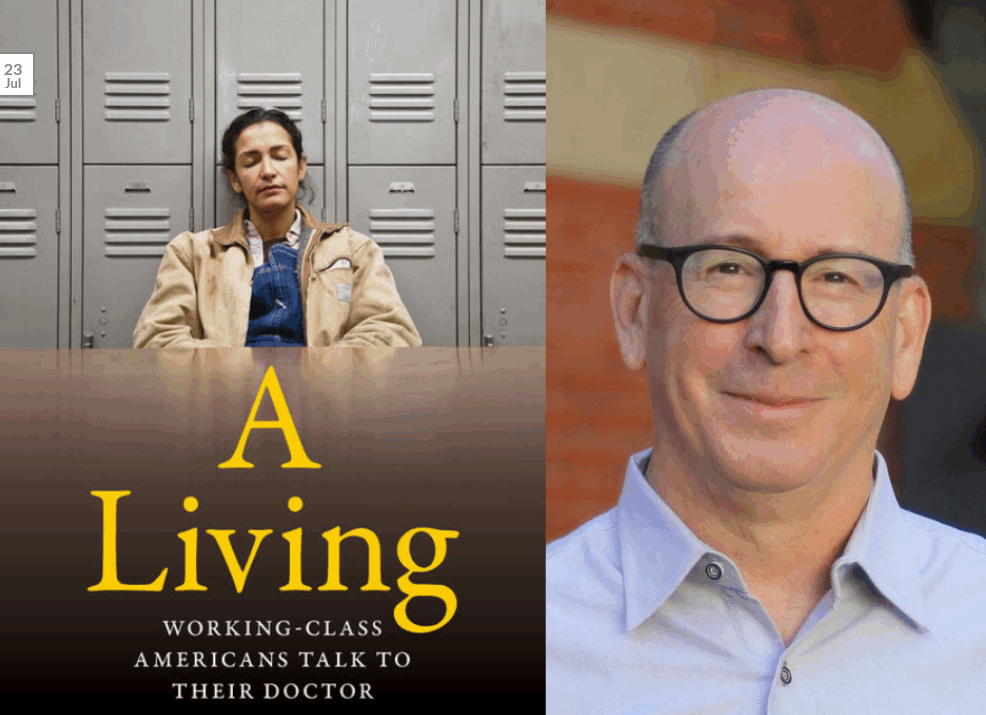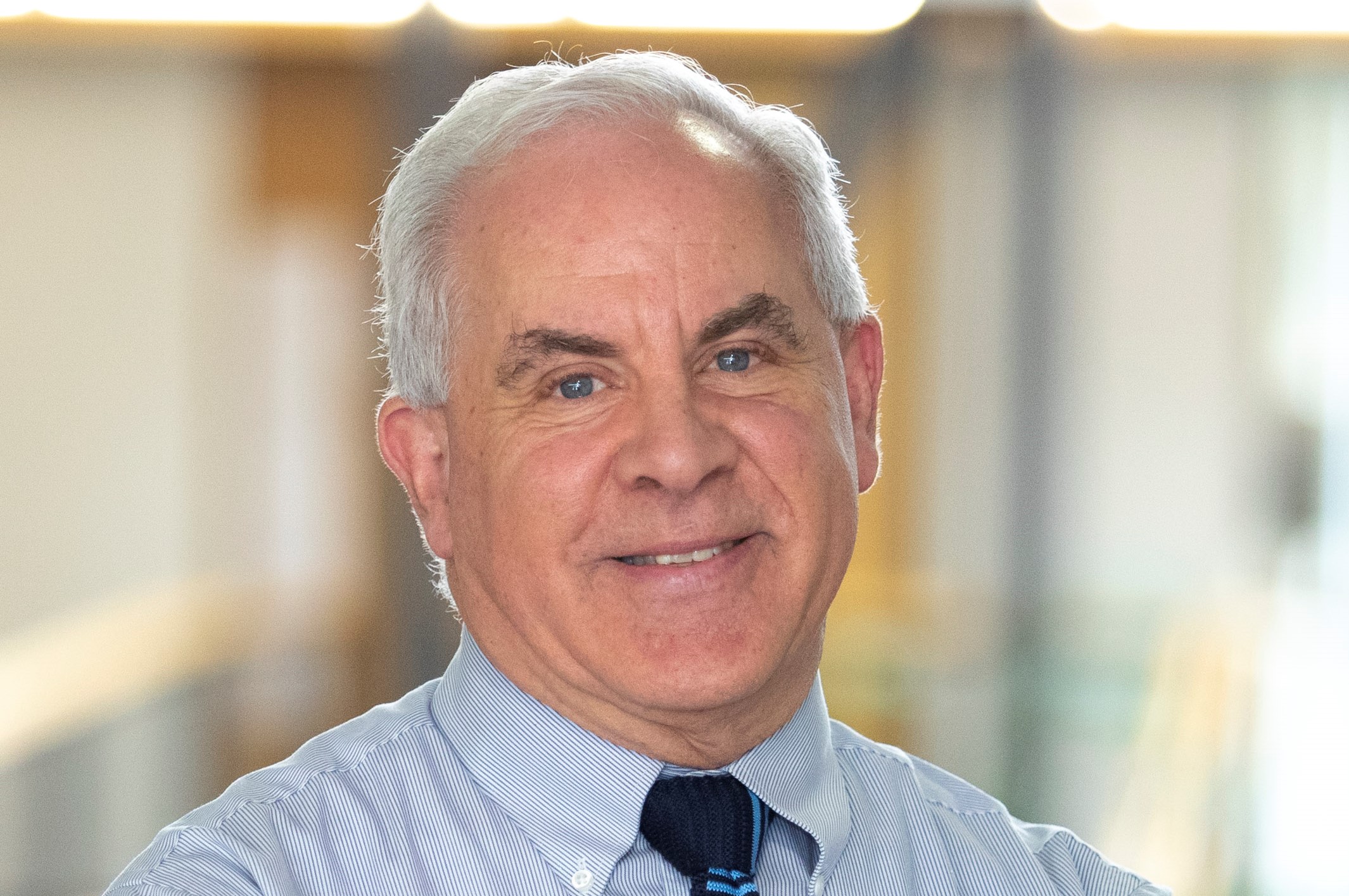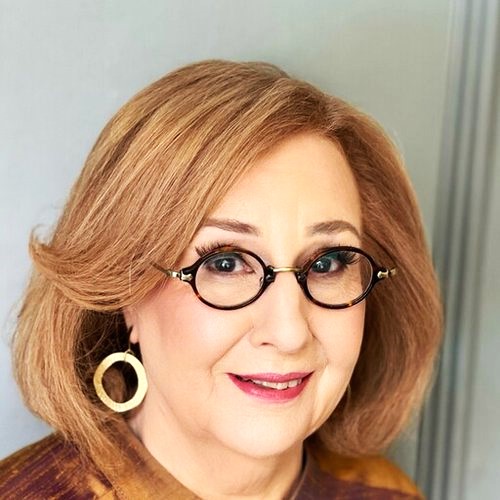“I have learned that there can be no meaningful discourse about health divorced from where people work, how many hours, which shift, the nature of the work, the amount of money they make.”
Originally published by The Providence Eye, a publication partner of Ocean State Stories.
By Diane Josefowicz
PROVIDENCE — When Dr. Michael Stein, a doctor and writer in Providence, sees patients, he makes a special effort to learn about their work. Much of it is manual labor: “Because I am a primary care doctor in a mid-sized industrial city in the northeastern United States where small manufacturing still exists, I often see people who work with their hands.” In his revelatory thirteenth book, A Living: Working-Class Americans Talk to Their Doctor, Stein presents his patients in their own words, in a series of first-person accounts in which they share their perspectives on their difficult, demanding, and sometimes rewarding hands-on jobs.
Nearly half of American workers hold a working-class job — a category that includes manual labor, the service industry, and clerical work. Stein points out one notable element of many, if not most of these jobs: they are all hard to perform remotely. During the first year of the COVID-19 pandemic, those who suffered the highest death rates had jobs where showing up was obligatory. These jobs could not be moved to Zoom, and, not coincidentally, they also frequently involved direct and close contact with others. These high-risk jobs included mass transit workers, drugstore and grocery clerks, and workers in congregate settings such as prisons, nursing homes, childcare centers, and hospitals, just to name a few. In these workplaces, social distancing was difficult, if not impossible, and protective gear was in vanishingly short supply.
People holding these jobs are called “frontline workers,” and their jobs are deemed “essential” for the obvious reason that vast swathes of society cannot function without them. Yet these same essential jobs are often poorly paid, with little time off or scheduling flexibility, and vanishing workplace protections. Stein writes in a plain and direct style, but on this point his spareness has a sharp edge: “The conversations I’ve written down here come after a pandemic that killed over one million Americans, some of them my former patients.”
Coming to his office, Stein’s patients arrive in their work clothes, “wearing dust and paint drips, tomato sauce and soot, oil stains and plaster nibs.” They bring workplace injuries, “fingers broken, knees swollen, wrists burnt, shoulders dislocated, forearms numb.” But being out of work is still more difficult. A job may be aggravating and dangerous, but it can also be a source of pride and satisfaction. A barber speaks of his work with evident pride: “I’d cut hair for free. That didn’t feel like going to work. It was creative, creating something from nothing. […] You got to learn something, fix it in your brain, transfer it to your hands, and make it come out your fingers.”
The stories are engaging and vivid. So are the tellers. Terence begins, “I’ve been read the last rites nine times.” What a thing to tell your doctor! Wrong-footed, Stein confesses: “I give a little nervous laugh before even deciding what to say.” His vulnerability encourages Terence, who then shares a harrowing story of getting caught on a conveyor belt in a gravel yard. “The belt snapped and wrapped me up,” he says, “and took me into the metal.” If Stein’s patient-centered approach to medicine makes listening an essential part of doctoring, it’s also clear that doctoring, as a job, is no walk in the park. There is, among other things, the undeniable fact that patients like Terence leave their own, indelible impressions. Stein writes, “I want to know where he is working now, but I’m afraid to ask.”
A storyteller himself, with more than a dozen books to his name, Stein is unobtrusive here, as he lets his patients hold the floor. When he interrupts, it’s to offer facts that establish a context for what he’s hearing and seeing. This context makes the book, already so attractive and humane, even more specific, historical, and sobering. Stein notes that, in the 1950s, more than a third of Americans belonged to a union; by 2019, just as income equality began to explode nationwide, the number of union members in the U.S. had dropped to one in ten.
Meanwhile, workplace protections diminished. On-the-job safety is now simply another cudgel. Some of Stein’s patients have trouble getting time off to recover from an injury, even one sustained on the job. Others are punished for getting hurt; their injuries are viewed by their bosses as evidence of a failure, on the worker’s part, to observe a safety protocol. “Opioid overdose rates,” Stein notes with devastating simplicity, “are highest among occupations with the greatest physical work demands and least access to paid sick leave.”
Stein’s conversations with patients about work are not mere small talk. Far from it — as Stein points out, work is a vital lens through which to make sense of health. He reflects, “I have learned that there can be no meaningful discourse about health divorced from where people work, how many hours, which shift, the nature of the work, the amount of money they make.” For patient-centered doctors like Stein, the notebook and the listening ear are key tools, as important as the stethoscope and the blood pressure cuff.
Michael Stein, M.D. is a physician and health policy researcher. He currently serves as the Chair and Professor of Health Law, Policy & Management at the Boston University School of Public Health. Prior to his appointment at Boston University, he served as Professor of Medicine and Director of the Behavioral Medicine and Addiction Research at Brown University. He has published 13 books and over 400 scientific journal articles, as well as essays and columns in The Washington Post, The Boston Globe, The New York Times, and elsewhere.
Diane Josefowicz’s writing has appeared in the Boston Globe, Dame Magazine, LA Review of Books, and Conjunctions. Her next book, Guardians & Saints: Stories, is forthcoming in October from Cornerstone Press, and her second novel, The Great Houses of Pill Hill (Little Place of Departed Spirits) will be published by Soho Press in 2026. Sign up for her newsletter, “What’s That Noise?” at www.dianejosefowicz.com. She lives in Providence.






